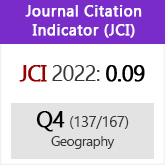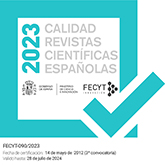The reform of the Common Organization of the sugar market in the EU and its impact on the sugar beet sector in Castilla y León
DOI:
https://doi.org/10.3989/estgeogr.201119Keywords:
Reform of the Common Organization of the sugar market 2006, Castilla y León, positive mathematical programming, Common Agricultural PolicyAbstract
The reform of the Common Organization of the Market (CMO) in sugar in the EU is responsible for a 50% loss in production quota for the Spanish sugar sector, with the closure of numerous factories and consequent loss of jobs. The aim of this article is two-fold: 1) to describe the process and basic features of the CMO reform in the EU and Spain, and 2) to present a method for the analysis of the impact of measures implemented in the Spanish sugar beet sector as a consequence of the CMO reform. The method is based on a positive mathematical programming model in which, in addition to sugar beet, other crops which compete with sugar beet for land, such as cereals and oilseeds are taken into account. As well as the agricultural policy measures applicable to sugar beet, the model takes into consideration all the measures of the Common Agricultural Policy (CAP) relative to crops competing with it. The measures derived from the Reform of the Common Organization of the sugar market vary from one autonomous region to another. In this study, the above-mentioned method has been applied to the case of Castilla y León, the autonomous region with the greatest production of sugar beet in Spain. The results, which show that the CMO reform entails a significant loss of profits for the sugar beet sector in Castilla y León, were obtained using data from the 2002 Red Contable Agraria Nacional to define the sugar beet sector, assuming that variations in cost and price are those published by the Ministerio de Medio Ambiente y Medio Rural y Marino between 2002 and 2009.
Downloads
References
ACOR, Revista de Información Agraria, números de junio y octubre de 2006, febre romarzo y junio-julio de 2008, octubre-noviembre de 2009. Disponibles en http://www.acor.es/acor (consulta 23/09/2011).
Brooke, A.; Kendrick, D. y Meeraus, A. (1992): GAMS: A User’s Guide. Danvers, Massachusetts, The Scientific Press.
Heckelei, T. y Britz, W. (2005): «Models Based on Positive Mathematical Programming: State of the Art and Futher Extensions”. Plenary paper presented at the 89 th EAAE Seminar, 3-5 February. Parma, pp. 48-73.
Helming, J. F. M.; Peeters, L. y Veendendaal, P. J. J. (2001): “Assessing the Consequences of Environmental Policy Scenarios in Flemish Agricultur”, en T. Heckelei; H. P. Witzke y W. Henrichsmeyer (eds.): Agricultural Sector Modelling and Policy Information Systems. Kiel, Vank Verlag.
Henry de Frahan, B. et al. (2007): “Positive mathematical programming for agricultural and environmental policy analysis : review and practice”, en A. Weintraub; T. Bjorndal; R. Epstein y C. Romero (eds): Management of Natural Resources: A Hanbook of Operations Research Models, Algorithms and Implementations. Springer, International Series in Operations Research and Management.
Howitt, R. E. (1995): “Positive Mathematical Programming”. American Journal of Agricultural Economics. 77/2, pp. 329-342. http://dx.doi.org/10.2307/1243543
Júdez, L. et al (2002): “Modeling Crop Regional Production Using Positive Mathematical Programming”. Mahematical and Computer Modelling, 35, pp. 77-89. http://dx.doi.org/10.1016/S0895-7177(01)00150-9
Osterburg B.; Offermann, F. y Kleinhanss W. (2001): “A sector consistent farm group model for German agriculture”, en T. Heckelei; H. P. Witzke y W. Henrichsmeyer (eds.): Agricultural Sector Modelling and Policy Information Systems. Kiel, Wissenschaftsverlag.
Röhm, O. y Dabbert, S. (2003): “Integrating Agri-Environmental Programs into Regional Production Models: An Extension of Positive Mathematical Programming”. American Journal of Agricultural Economics, 85/1, pp. 254-265. http://dx.doi.org/10.1111/1467-8276.00117
Downloads
Published
How to Cite
Issue
Section
License
Copyright (c) 2011 Consejo Superior de Investigaciones Científicas (CSIC)

This work is licensed under a Creative Commons Attribution 4.0 International License.
© CSIC. Manuscripts published in both the printed and online versions of this Journal are the property of Consejo Superior de Investigaciones Científicas, and quoting this source is a requirement for any partial or full reproduction.All contents of this electronic edition, except where otherwise noted, are distributed under a “Creative Commons Attribution 4.0 International” (CC BY 4.0) License. You may read here the basic information and the legal text of the license. The indication of the CC BY 4.0 License must be expressly stated in this way when necessary.
Self-archiving in repositories, personal webpages or similar, of any version other than the published by the Editor, is not allowed.
















